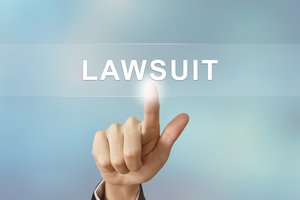
You’ve been injured due to the fault of another person and the insurance company for the other person is not willing to pay you fair compensation for your injuries. What do you do? You have two options. The first is to take their offer and settle for an amount less than would compensate you for your injuries. The second is to stand up for your rights and file a lawsuit.
Most people don’t want to don’t want to file a lawsuit. However, in our country, a person has a right to file a lawsuit against someone who has injured them and is unwilling to compensate them for their injuries.
So, what does it mean to file a lawsuit for your injuries? We have all heard about lawsuits, but few really know what it means. And the reality is not like T.V. where a case begins and ends in less than 60 minutes. Reality is that the litigation process is a bit more complex. Let’s start at the beginning.
INVESTIGATION
Before you can file a lawsuit, you must have a reasonable belief that someone else is responsible for your injuries. That is, you are required to do some investigation in order to determine whether someone else is at fault for your injuries. That means that they failed to use reasonable care. As the person injured, you are the one who files the lawsuit. When you do, you have the burden of proof. You must prove that the person or company you sued is responsible for your injuries. In most cases, you must convince a jury by a preponderance of the evidence. This means it is more likely than not that the person was negligent, and their negligence proximately caused your damages.
After an investigation has determined another party was negligent or a product was defective and that negligence or defect proximately caused your damages and the insurance company has not offered you fair compensation for your injuries, then you can file a lawsuit. This starts the litigation process.
FILING A LAWSUIT
The process starts with filing a Petition in court. A Petition explains the facts of the case, the legal theories you are seeking to pursue, and the damages you are seeking to recover. The case is filed in state or federal court (depending on the residence of the parties involved and the amount of damages). And if it is a personal injury case, the case is filed in a court in the county where the collision occurred or in the county of Defendant’s residence. There are some exceptions to this rule.
The person filing the Petition is called the Plaintiff. When you file a Petition, you must pay a filing fee. Once the Petition is filed, the Defendant (the party you sued) must be “served” with a copy of the Petition and the summons (telling them they must file an answer). There are different types of service of the Petition, but the most common method is for a law enforcement officer or process server to actually hand deliver the Petition to the Defendant.
Once the Defendant is served then the Defendant must file an Answer to the Petition. This is where the Defendant admits or denies in writing the allegations made in the Petition as well as sets out any defenses they have to the lawsuit.
TO BE CONTINUED
